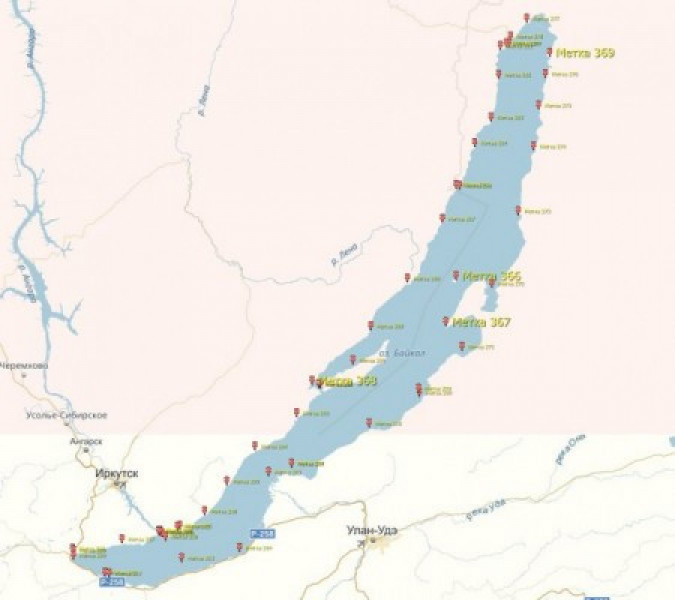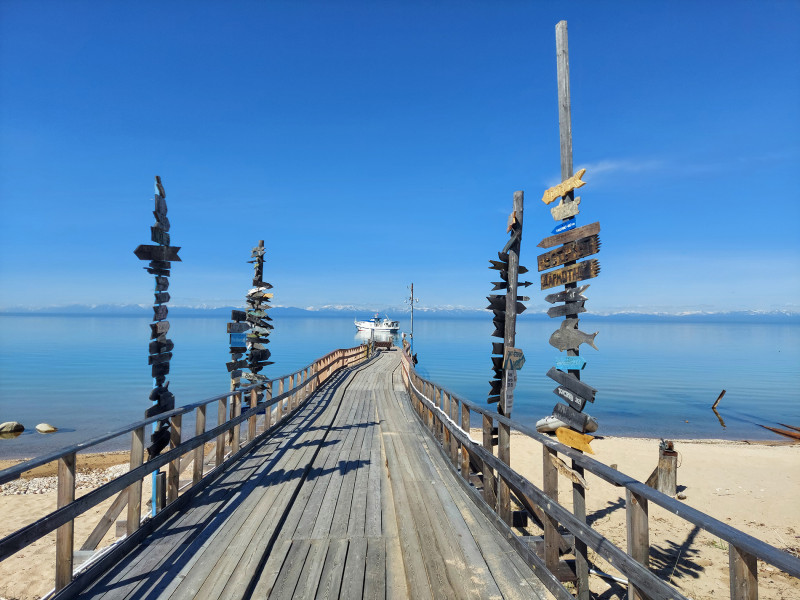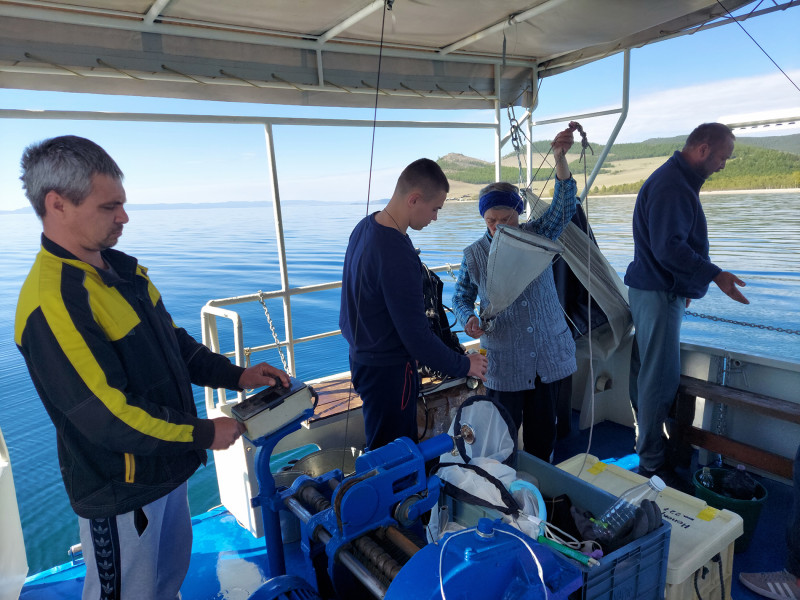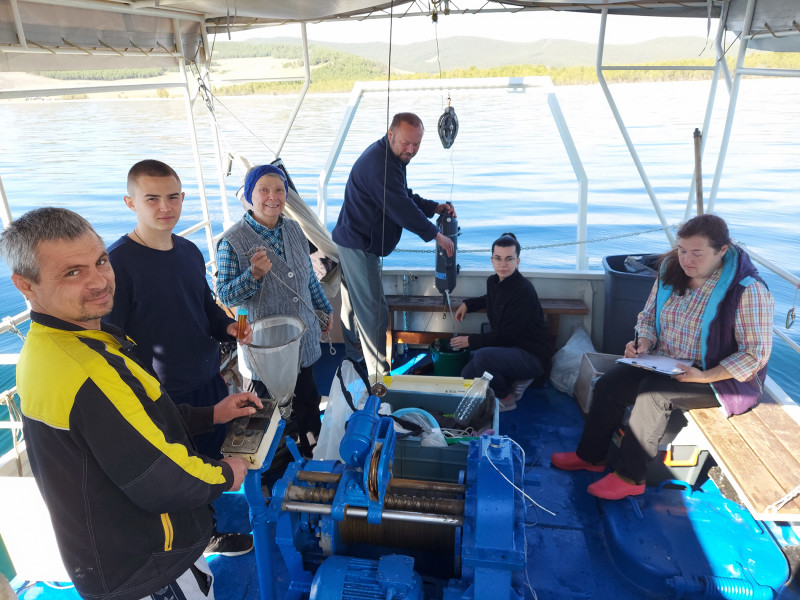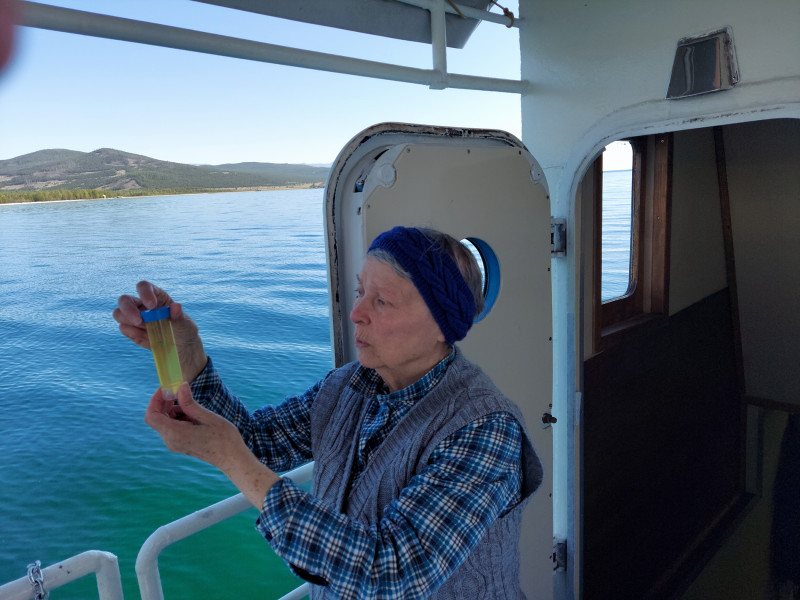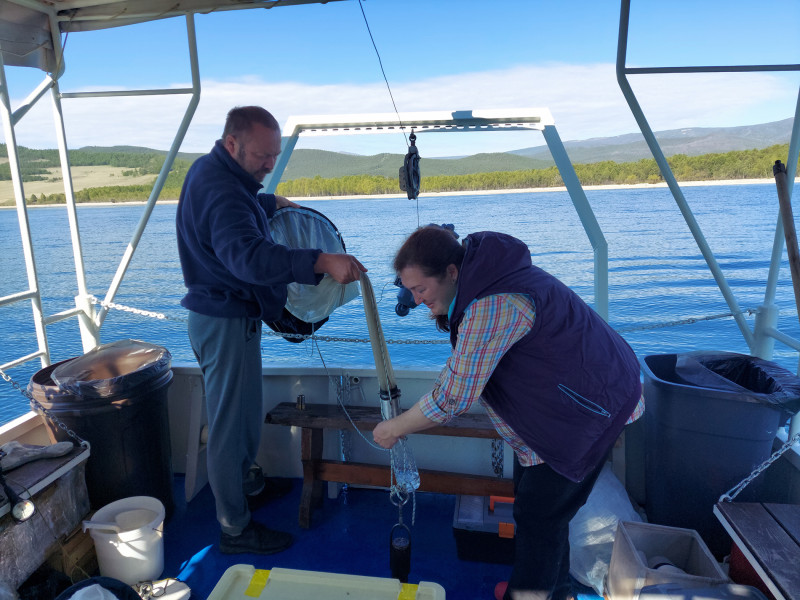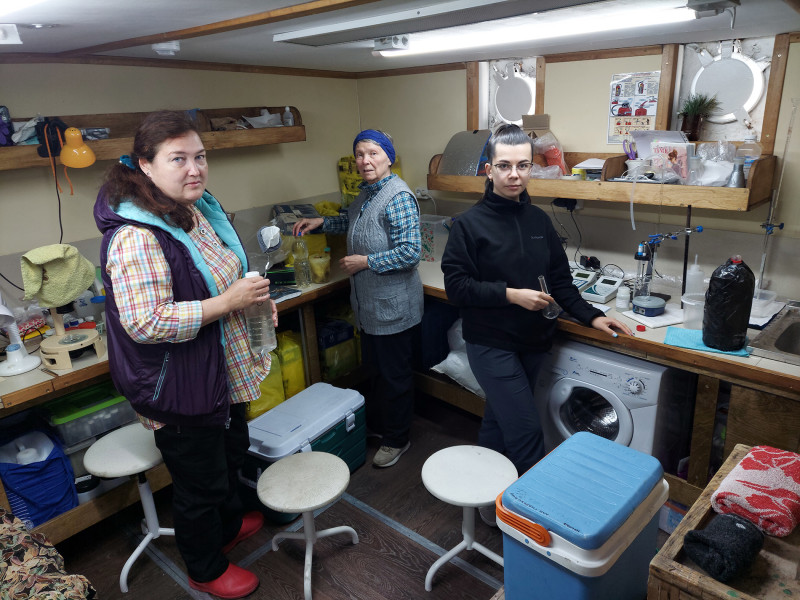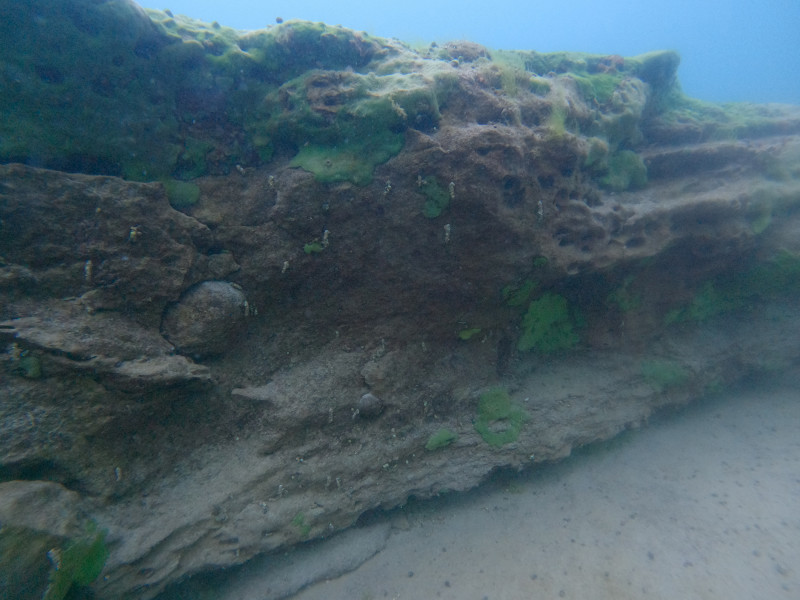Field works on the R/V “Papanin” from May 31 to June 10, 2024
The field works were carried out within the State assignment “Study of transformations of the state of water bodies and watercourses of Eastern Siberia in seasonal and long-term aspects in the context of climate change, geological environment and anthropogenic loads” (0279-2021-0005) (led by A.P. Fedotov).
The expedition was aimed at studying hydrochemical parameters and the distribution of phyto-, zooplankton-, and zoobenthos in the shallow water zone of Lake Baikal. The average sampling step along the Baikal perimeter was every 30-50 km.
Additionally, the gastropod mollusks and sediment samples were collected to determine concentration levels, buildup, and accumulation of priority organic pollutants (total concentration of 7 indicator congeners of PCBs and phthalates), as well as parabens and ibuprofen. We studied the distribution of caddis flies, both in imago (fly) form and in larval and pupal stages, down to a depth of 30 m. These works focused on determining the geographical distribution of alien species of caddis flies in Lake Baikal. To analyze the hydrological parameters of the mixing zones of lake and river waters, coastal water was sampled to study its oxygen and hydrogen isotopic composition.
The lowest temperature of the surface water layer (0-1 m) was recorded at Elokhin station (2.8°С), and the highest temperature was at Mukhor Bay and near Nizhneangarsk settlement - 16.3 and 14.5°С, respectively. The maximum transparency of 22 m was recorded near the settlements of Bolshoye Koty and Bolshoye Goloustnoye.
According to the preliminary data, representatives of the genera Aulacoseira, Synedra, and Stephanodiscus predominated among the planktonic diatoms, and species of the genus Dinobryon were dominant among yellow-green algae.




